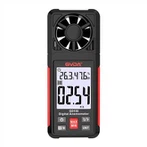How to Repair a Digital Multimeter and Tips for Getting Started
Repair method
When looking for faults, you should first look for the outside and then the inside, first the easy and then the difficult, break it into parts, and focus on breakthroughs. The methods can be roughly divided into the following categories:
1. The sensory method relies on the senses to directly judge the cause of the fault. Through visual inspection, it can be found such as broken wires, desoldering, short circuits, broken fuse tubes, burned components, mechanical damage, and warped copper foil on printed circuits. rise and break, etc.; you can touch the temperature rise of batteries, resistors, transistors, and integrated blocks, and refer to the circuit diagram to find out the cause of abnormal temperature rise. In addition, you can also use your hands to check whether the components are loose, whether the integrated circuit pins are firmly inserted, and whether the transfer switch is stuck; you can hear and smell whether there are any strange sounds and smells.
2. Voltage measurement method: Measuring whether the working voltage of each key point is normal can quickly find the fault point. Such as measuring the working voltage and reference voltage of the A/D converter.
3. Short-circuit method: The short-circuit method is generally used in the methods of checking A/D converters mentioned above. This method is often used when repairing weak current and micro-electrical instruments.
4. Circuit breaking method: Disconnect the suspicious part from the whole machine or unit circuit. If the fault disappears, it means that the fault is in the disconnected circuit. This method is mainly suitable for situations where there is a short circuit in the circuit.
5. Component measurement method: When the fault has been reduced to a certain component or several components, it can be measured online or offline. If necessary, replace it with a good component. If the fault disappears, it means the component is bad.
6. Interference method: Use the induced voltage of the human body as an interference signal to observe the changes in the liquid crystal display. It is often used to check whether the input circuit and display part are intact.
Repair tips
For a faulty instrument, you should first check and determine whether the fault phenomenon is common (all functions cannot be measured) or individual (individual functions or individual ranges), and then distinguish the situation and solve it accordingly.
1. If all gears fail to work, focus on checking the power circuit and A/D converter circuit. When checking the power supply part, you can remove the laminated battery, press the power switch, connect the positive test lead to the negative power supply of the meter under test, and connect the negative test lead to the positive power supply (for a digital multimeter). Turn the switch to the diode measurement position. If it displays is the forward voltage of the diode, it means that the power supply part is good. If the deviation is large, it means there is a problem with the power supply part. If there is an open circuit, focus on checking the power switch and battery leads. If a short circuit occurs, you need to use the circuit breaking method to gradually disconnect the components using power, focusing on checking the operational amplifier, timer, A/D converter, etc. If a short circuit occurs, generally more than one integrated component will be damaged. The A/D converter can be checked at the same time as the basic meter, which is equivalent to the DC meter of an analog multimeter. The specific inspection method is:
(1) The measuring range of the meter under test is turned to the lowest DC voltage range;

(2) Measure whether the working voltage of the A/D converter is normal. According to the A/D converter model used in the table, corresponding to the V+ pin and COM pin, whether the measured value is consistent with its typical value.
(3) Measure the reference voltage of the A/D converter. The reference voltage of commonly used digital multimeters is generally 100mV or 1V, that is, measure the DC voltage between VREF+ and COM. If it deviates from 100mV or 1V, use an external potentiometer. Make adjustments.
(4) Check the display number whose input is zero, short-circuit the positive terminal IN+ and the negative terminal IN- of the A/D converter, so that the input voltage Vin=0, the meter displays "00.0" or "00.00".
(5) Check the monitor for full bright strokes. Short-circuit the test terminal TEST pin and the positive power supply terminal V+, so that the logic ground becomes high potential and all digital circuits stop working. Since DC voltage is applied to each stroke, all strokes light up and the alignment meter displays "1888", and the alignment meter displays "18888". If there are missing strokes, check whether there is contact or disconnection between the corresponding output pin of the A/D converter, the conductive adhesive (or connection), and the display.




